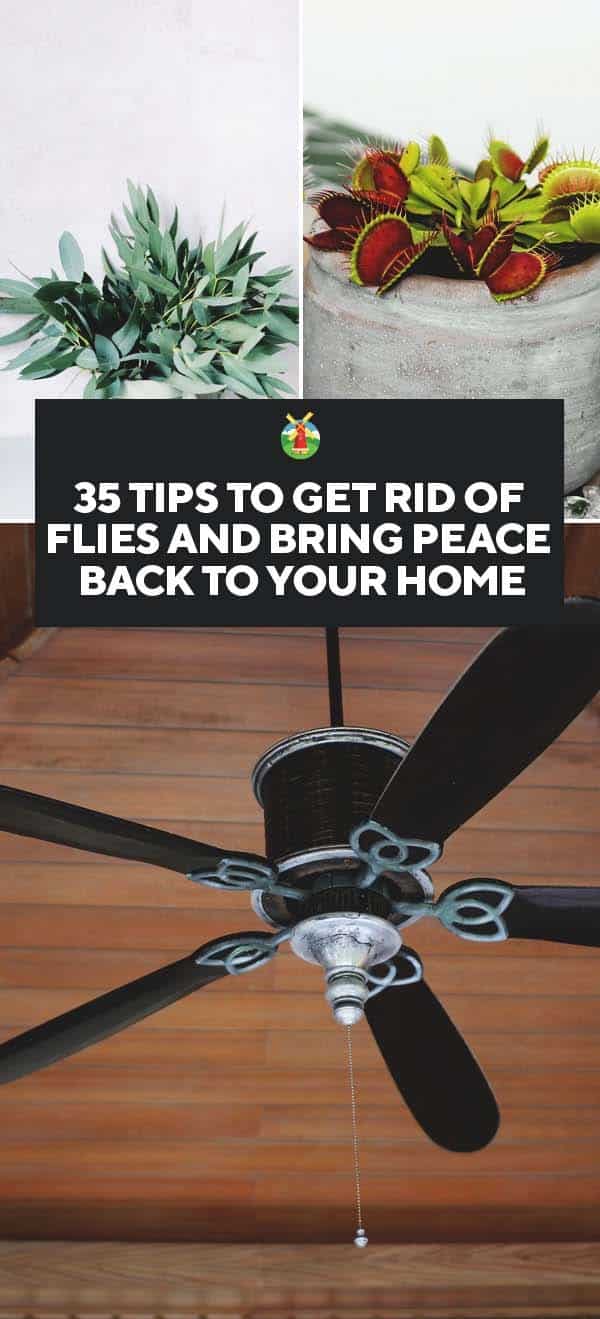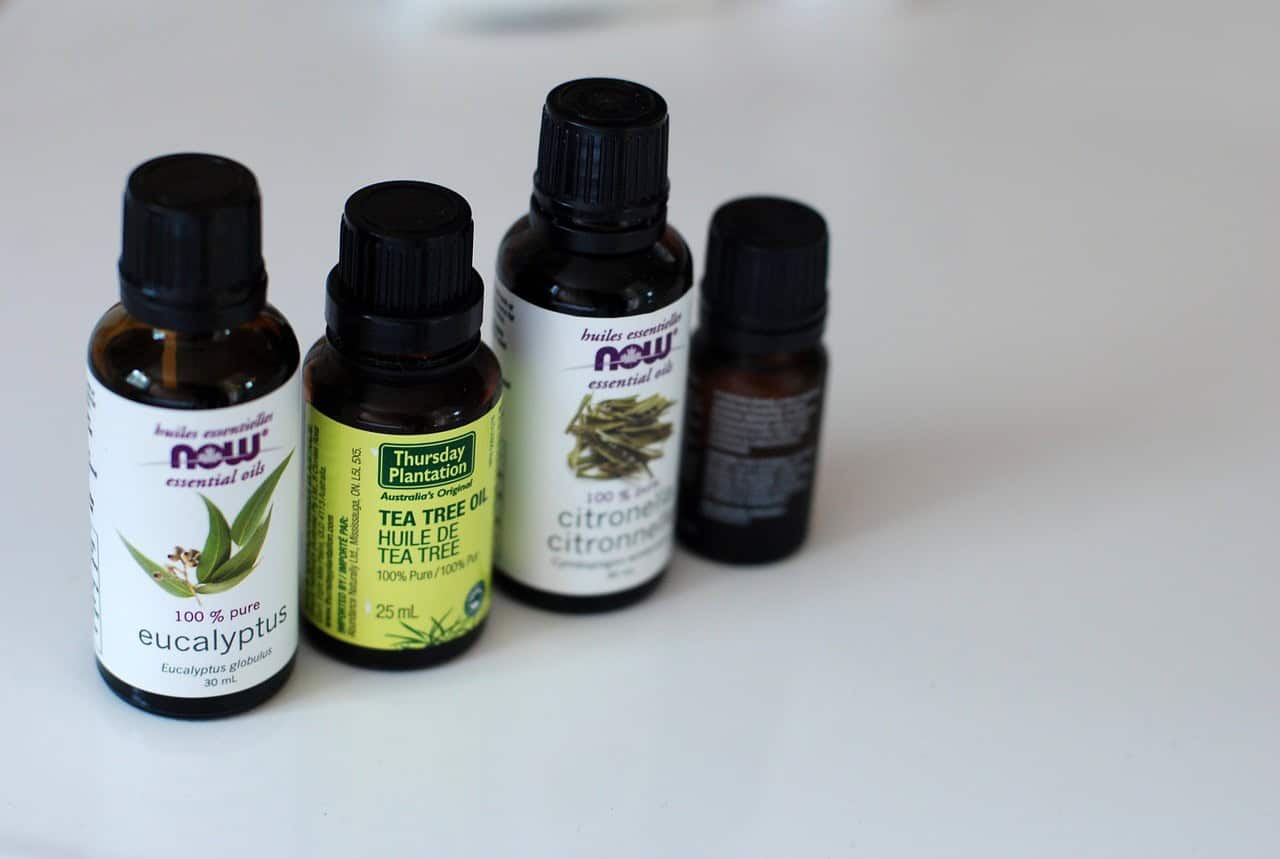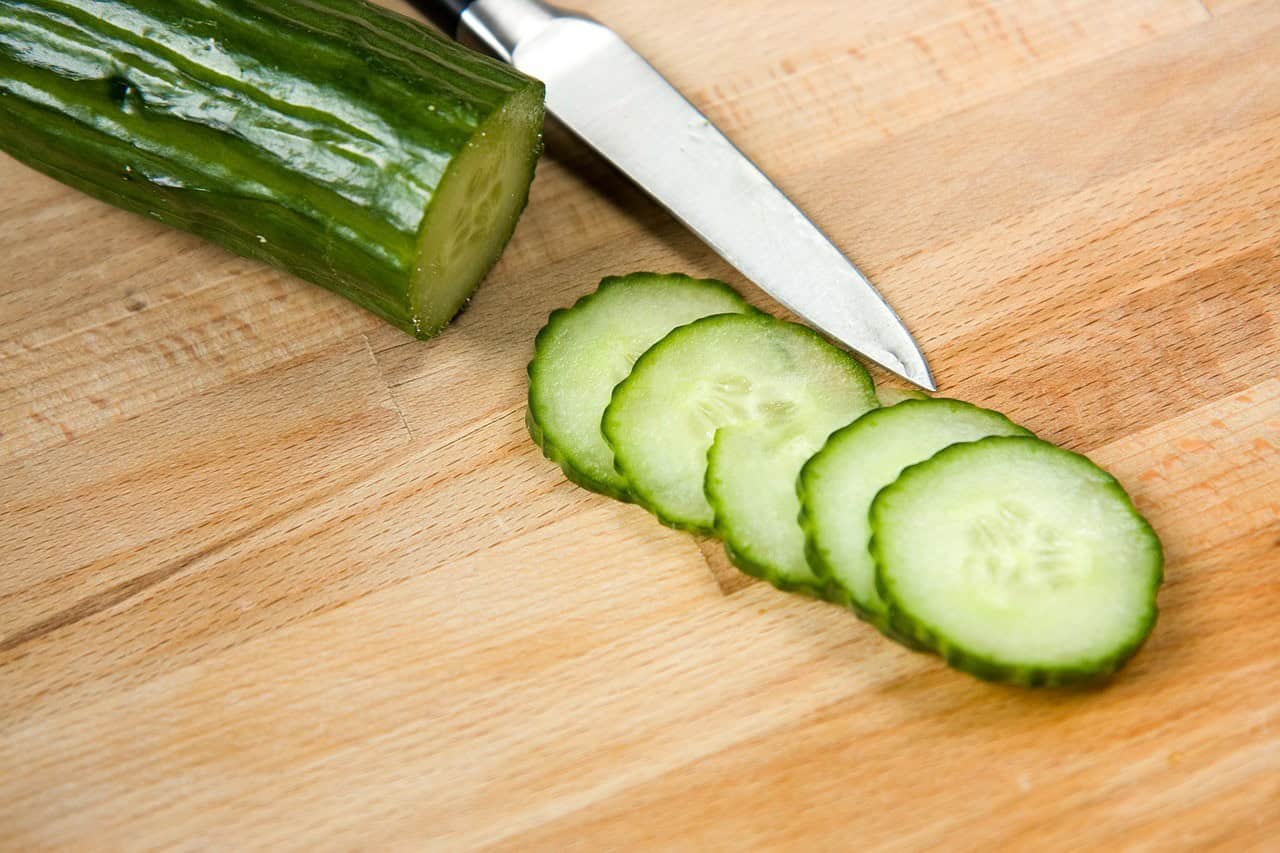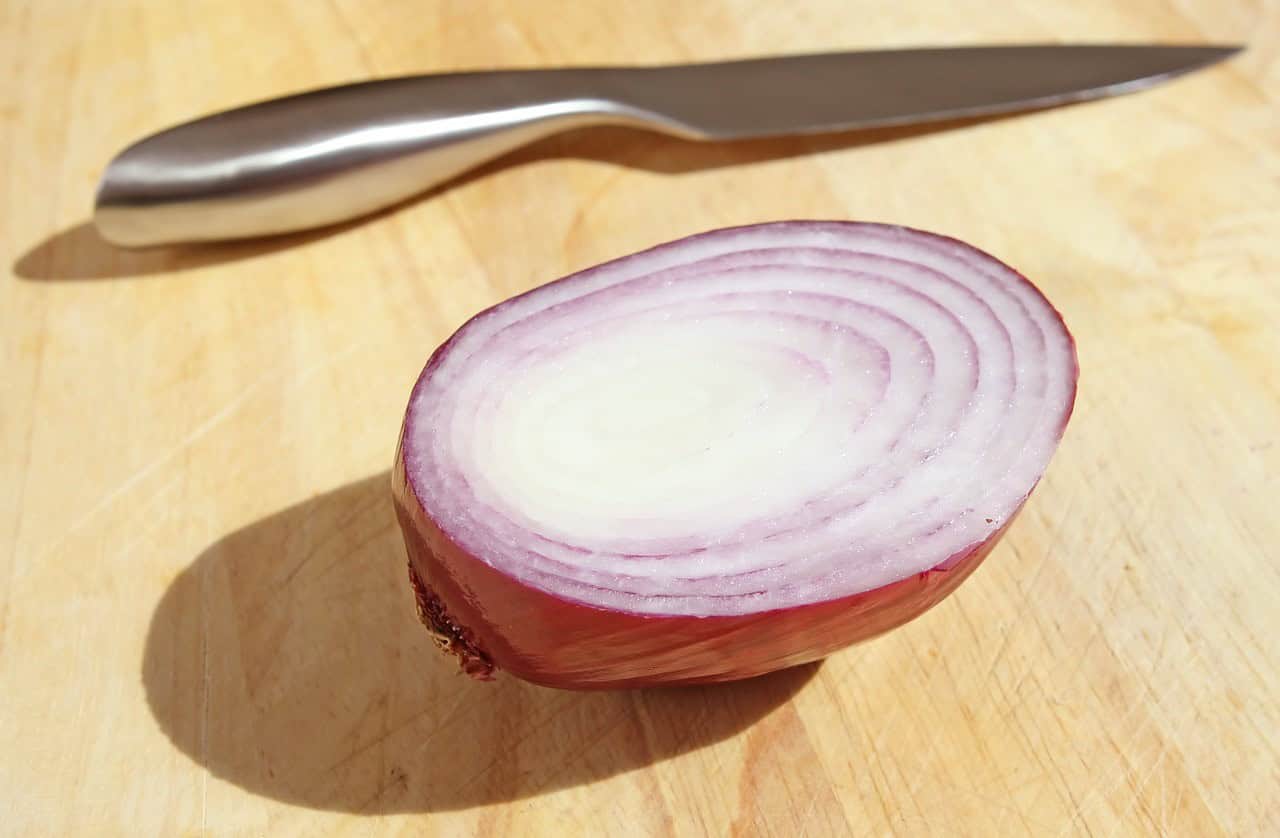We’re all familiar with these unwelcome visitors that seem to appear out of nowhere, invading our homes, yards, chicken coops, and any other space they can find. Flies are an inevitable companion during the warm summer months. While we cherish the sunshine and gardening, their buzzing presence is a constant annoyance.
If you’re feeling frustrated by the sheer number of flies around your home this year, take heart – I’ve got more than 30 effective solutions to share with you, helping you regain control over the fly population in and around your house.
Vinegar and Dish Soap
A tried-and-true method for capturing flies involves a combination of vinegar and dish soap. The acidity of the vinegar naturally attracts these pests, prompting them to congregate around the mixture. By adding a few drops of dish soap, you’ll create an environment that’s deadly to the flies, causing them to succumb to the soapy solution as they attempt to indulge in the vinegar.
As the bowl fills up with dispatched insects, be sure to dispose of it and reset the trap until all signs of fly activity have ceased.
Bottle Trap
When clearing out your trash or finishing off a two-liter bottle, consider saving it for a fly-catching endeavor. Begin by cutting the bottle in half and placing apple cider vinegar in the lower portion, accompanied by some dish soap. Next, invert the top part of the bottle to create a makeshift funnel. Flies will be attracted to the vinegar mixture and naturally follow it into the funnel, but their exit will be hindered.
Once the trap is filled with unwanted visitors, take it outside to empty and reset until no further fly activity is observed. To enhance the effectiveness of your DIY trap, consider suspending the bottle from a string or adding a UV light above it – flies are drawn to this type of illumination.
Plant Wisely
When it comes to keeping flies at bay, certain plants can be a natural and effective deterrent. Not only can you place these plants strategically around your home, but you can also utilize their potent scents indoors by harvesting leaves or stems. Some of the most effective fly-deterrent plants include basil, bay leaf, lavender, and mint. By planting them in containers, you can easily move them to areas where flies are most attracted, such as near doors or windows.
Paper Funnel Trap
A classic DIY solution for capturing flies is the paper funnel trap, which has been effective for years. To set it up, start by selecting an old wine or vinegar bottle and placing it in areas where you typically spot fly activity. Fill the bottle one-quarter of the way with apple cider vinegar to create a sweet, sticky environment that will draw the flies in. Next, take a piece of paper and roll it into a funnel shape, making sure to place the narrower end into the bottle.
This clever design allows the flies to enter the trap through the wider part of the funnel but prevents them from escaping back out, making it an efficient way to catch these pesky insects.
Ginger Spray
To repel pesky scent flies, try harnessing the power of ginger! Start by creating a homemade spray using fresh ginger as the main ingredient. Simply add a small handful of grated ginger to an empty spray bottle and top it off with about a cup of water. The ginger will provide a potent aroma that flies won’t appreciate, encouraging them to buzz off in search of more fly-friendly environments.
To maintain the repelling effects, be sure to reapply the spray as needed to areas where you’ve spotted those unwanted visitors.
Hot Pepper Spray
To keep those pesky flies at bay, you can also utilize hot peppers as a natural deterrent. One effective method is to create a fly-repelling spray using cayenne pepper as the base ingredient. Simply mix a spoonful of cayenne pepper with enough water in a spray bottle to achieve the desired consistency. You can then spritz this concoction around areas where flies tend to congregate, such as near food or trash.
Alternatively, you can also sprinkle a pinch of cayenne pepper directly on these areas to help keep flies away.
Essential Oils Spray
Flies are notoriously finicky when it comes to their surroundings, and there are certain scents that they will actively avoid. Cinnamon, thyme, clove, lemongrass, and peppermint essential oils all fall into this category, emitting a pungent aroma that flies find particularly unpleasant. To take advantage of this natural deterrent, you can either plant these herbs around your home or create a homemade spray using the essential oils.
Simply combine a few drops of the oil with approximately two cups of water in a spray bottle, and then target areas where flies tend to congregate.
Ceiling Fans are Friends
When it comes to keeping flies out of your home, you may be surprised to learn that your everyday household appliances can play a crucial role. Ceiling fans, box fans, and other types of fans can actually help deter or even encourage flies to leave your space. The key lies in the way they create a gentle breeze that disrupts the flies’ ability to navigate. By turning these fans on, you’re essentially making it difficult for them to fly around comfortably.
This subtle wind current creates an environment where flies feel inclined to seek refuge elsewhere. In my experience, I’ve found that this simple trick can be quite effective in keeping my home fly-free, even without the use of screens. By incorporating ceiling fans into my daily routine, I rarely encounter any unwanted fly visitors.
Eucalyptus
While eucalyptus is a natural fly deterrent, you have two options for incorporating its benefits into your home. One approach is to simply diffuse the essential oil of a eucalyptus plant, which effectively repels flies. Alternatively, you can cultivate the plants themselves and place them around your house. Either method will prove effective in keeping those pesky insects at bay.
If you decide to create a spray using the essential oil, combine 25 drops of the oil with two cups of water in a spray bottle. Adding one cup of vodka is optional, but it’s said that flies have an aversion to this particular spirit – if you don’t have any on hand, however, the spray will still function without it.
Geranium
To effectively repel those pesky scent flies, turn to the trusty geranium essential oil. Combine a few drops of this potent oil with two cups of water in a spray bottle. For an added boost, you can also mix in some vodka if you prefer. Once the solution is ready, apply it directly to areas where fly activity has been observed, such as around windowsills or near trash cans.
Tea Tree Oil
When working with children regularly, maintaining a clean environment is crucial due to the rapid spread of germs and head lice. As someone who frequently interacts with kids, I’ve found tea tree oil to be a valuable ally in keeping these pesky issues at bay. Not only does it repel lice from clothing, but it also has an added benefit: flies detest its scent as well! To create a natural fly repellent, simply mix a few drops of tea tree oil with two cups of water in a spray bottle.
For enhanced effectiveness, you can add a cup of vodka to the solution.
Milk Jug Trap
Don’t dispose of the milk jug after you’ve finished off the contents – instead, turn it into a fly catcher. You can suspend the jug in mid-air or place it on a surface where you know flies will be attracted to it. To create a sticky surface, cut the jug in half and swirl honey around the inside until the sides are well-coated. Drain any excess honey that may remain after this step. Next, add some rotten apples to the bottom of the jug and cover it with plastic wrap.
Make sure to poke holes in the plastic using a fork – this will allow flies to enter the trap but prevent them from escaping once they’re inside. When the trap is full of caught flies, simply discard them and reset the trap to catch more.
Fly Strips
When dealing with persistent porch pests, I found solace in the humble fly strip. These adhesive wonders are designed to attract and trap pesky flies, rendering them useless to bother me again. When applying, caution is key: some strips dangle from ceilings, while others attach to door frames. Be mindful of their sticky nature, lest you inadvertently ensnare an unsuspecting human. Regardless of your chosen application method, fly strips work by drawing in the flies, which are then stuck fast.
Simply remove and replace the strips when they’re full, ensuring a constant supply of effective fly-catching power.
Suck Them Up
For an immediate solution to a fly infestation, consider employing a vacuum cleaner’s powerful suction to capture the pesky insects. Simply plug in your machine and direct the wand at the area where flies are congregating. As you do this, take note of the direction of airflow and ensure that any captured flies don’t survive long enough to be released back indoors by emptying the canister outside.
Catnip
Catnip’s versatility knows no bounds – it’s not only a favorite among felines, but also a natural solution for repelling pesky flies! When grown and utilized properly, catnip can be transformed into a spray that effectively keeps those unwanted visitors at bay. For a leaf-based approach, simply steep the leaves in boiling water for 30 minutes to an hour, allowing the potent aroma to permeate the liquid.
Once the scent is strong, remove the leaves from the pot and transfer the remaining mixture to a spray bottle. Alternatively, you can opt for the convenience of catnip essential oils, combining a few drops with two cups of water before filling a spray bottle. To put this natural repellent into action, simply apply it where flies are most drawn to, reapplying as needed to maintain its effectiveness.
Clean House
To prevent flies from buzzing around your home, it’s crucial to maintain a clean and tidy environment both indoors and outdoors. Start by regularly emptying your trash cans and keeping your yard free of animal waste and dead plants. Additionally, pay attention to areas with high moisture levels, such as wet sponges or mops, and ensure they are either disposed of properly or allowed to air dry before being stored away.
By following these simple steps, you can help keep flies at bay and enjoy a more peaceful living space.
Seal It Up Tight
When it comes to unwanted houseguests, flies are notorious for slipping into homes through even the tiniest openings. One common entry point is around windows and doors, where gaps can provide a direct route for these pesky insects. To prevent this, consider addressing any vulnerabilities you may have in your home’s envelope by adding insulation, caulking, or installing new weather stripping.
By taking these simple steps, you’ll not only keep flies out but also improve the overall energy efficiency of your home.
Lemon and Cloves
When planning an outdoor event, unwanted fly visitors can be a major concern. Fortunately, there’s a simple yet effective way to keep them at bay. The trick is to utilize the natural repellent properties of lemons and cloves. To create your own fly deterrent, cut a lemon in half and fill each section with whole cloves. Strategically place these scented lemon halves around food stations or areas where flies tend to congregate.
Flies are naturally wary of the citrusy aroma of lemons and the pungent smell of cloves, so this combination should keep them from ruining your outdoor gathering. To ensure maximum effectiveness, make sure to place the lemons at least 30 minutes prior to the event.
Pennies
To maintain serenity during outdoor events, consider strategically placing glasses of water throughout areas where guests will congregate, such as near food and socializing zones. This approach has been employed for years, with the addition of a simple yet effective element: a penny in each glass. The reason behind this method’s success lies in the aversion flies have towards copper, a trait that has been observed and utilized to great effect.
Citronella
While citronella is often associated with repelling mosquitoes, its benefits extend to warding off flies as well. The key lies in utilizing citronella candles, which emit a distinct scent that flies find particularly unpleasant. In fact, these pesky insects will go to great lengths to steer clear of the smoke produced by these candles. When hosting an outdoor gathering, consider incorporating citronella candles into your event planning to create a fly-free and mosquito-free environment.
Sliced Cucumber
While it’s common knowledge that pigs and cats aren’t fond of cucumbers, a surprising fact is that flies share their disdain for this vegetable as well. In reality, flies are repelled by the scent released when cucumbers are sliced or left uncut. This natural deterrent can be leveraged to your advantage by strategically placing cucumber slices in areas where flies tend to congregate, such as around food and trash cans, or at outdoor events.
By taking advantage of this peculiarity, you can effectively discourage fly populations without the need for chemical-based repellents.
Cinnamon Candles
While flies are notorious for their keen sense of smell, they also have a peculiar dislike for the scent of cinnamon. As such, incorporating cinnamon-scented items throughout your home’s interior and exterior spaces can be an effective way to deter these unwanted visitors. Consider utilizing cinnamon-scented candles, air fresheners, or even creating a homemade spray using cinnamon essential oils and misting it around doorways, windows, and other entry points.
Water Bags
A clever technique for repelling flies involves creating a deceptive barrier. Simply fill a plastic bag with water, seal it, and hang it in areas where flies are present, such as doorways or higher locations. The reason this method is effective lies not in what the flies see, but rather in what they don’t – an optical illusion that prompts them to flee immediately.
ACV and Witch Hazel
When it comes to natural solutions for keeping flies at bay, combining apple cider vinegar with witch hazel is a winning combination. The latter’s astringent properties and the former’s acidity work in harmony to deter those pesky insects. To create the perfect fly-repelling spray, simply mix 1/2 cup of witch hazel with an equal amount of apple cider vinegar in a spray bottle.
You can also enhance the formula by adding approximately 30 drops of eucalyptus oil for its additional insect-repelling properties. To use this natural deterrent, spritz doorways and windows inside your home to keep flies from entering or exiting. Alternatively, you can target specific outdoor areas that are prone to fly activity.
Milk Trap
For dairy farmers or those looking for an unconventional fly repellent method, using milk can be an effective solution. Simply combine one pint of milk with ½ cup of sugar and ¼ cup of ground pepper in a saucepan. Bring the mixture to a low boil, then reduce heat and let it simmer for about 10 minutes. Once the mixture has cooled slightly, transfer it to a bowl where flies can be attracted to its sweet aroma. To prevent escapees, cover the bowl with plastic wrap and poke holes using a fork.
When the bowl is full of trapped flies, ensure you empty it outside and reset the trap until all signs of fly activity have ceased.
Flyswatters
While embracing modern technology is essential, there’s something to be said about reverting to traditional methods to alleviate frustration. Swatting flies can be an effective way to release pent-up energy and take a momentary break from our fast-paced lives. Whether you opt for a classic fly swatter or its electric counterpart, this old-school approach can provide a sense of accomplishment and even offer a brief workout.
Salt Gun
Unbeknownst to me until a casual conversation with a friend, I had never encountered a salt gun prior to our discussion. Her husband, in an attempt to poke fun at their adult son, presented him with one as a humorous gift. However, what started out as a joke soon turned into a useful tool for the family. They’ve found themselves relying on it frequently around the house to effectively eliminate pesky flies, and they’re not alone – many users praise its efficiency and entertainment value.
Venus Flytraps
Venus flytraps often get a bad rap for being aggressive and vicious plants that will stop at nothing to devour their victims. However, the reality is far from it. These attractive plants are actually quite harmless and won’t bite unless provoked. While they may not be the most effective fly killers, they can still play a role in reducing the fly population in your home.
By placing one or two Venus flytraps in areas where flies tend to congregate, you’ll give your plant a chance to feed and also keep your home less plagued by these pesky insects.
Beneficial Nematodes
When it comes to maintaining a healthy lawn and garden, incorporating beneficial insects is essential. Among these, beneficial nematodes are a crucial addition. These microscopic bugs are remarkably resilient, working effectively for up to 18 months on your property. By burrowing into the soil, they target fly larvae, providing a natural means of population control.
Strategically apply the nematodes in areas where flies are known to breed, such as beneath chicken coops or near animal feed and feces. While this approach may not eradicate existing populations, it can significantly prevent future generations from establishing themselves near your home.
Citrus Peels
A clever way to deter flies from infesting your home is by exploiting their aversion to citrus scents. When you’re finished enjoying an orange or grapefruit, don’t simply dispose of the peel – instead, place it in a strategic location around your house where flies tend to congregate. This could be a specific area like a back deck, patio, or even near doorways through which they enter.
By positioning the citrus peels in these areas, you’ll create an environment that’s unappealing to those pesky insects, effectively discouraging them from lingering around your space.
Hairspray
When dealing with an infestation of unwanted aerial visitors, a more patient approach may be in order. The next time you enter a room teeming with flies, don’t reach for the bug spray just yet. Instead, grab your trusty hairspray and get ready to take matters into your own hands. By strategically aiming the hairspray at the buzzing pests, you can temporarily immobilize them by causing their delicate wings to stick together.
This ingenious hack allows you to then swoop in with a flyswatter or other suitable means of dispatching the unwanted guests, effectively ridding your space of these pesky intruders.
Keep the Lights Low
To render your home less appealing to flies, consider maintaining a darker ambiance. This is because these pesky insects are naturally drawn to light sources. By minimizing the amount of illumination in your home through measures such as drawing down shades and closing doors, you’ll effectively deter flies from frequenting the area.
Malt Vinegar
When you’re plagued by flies in your home, a common household item can prove to be a natural deterrent. Malt vinegar is that solution. To create a fly-repelling solution, bring the malt vinegar to a boil in a saucepan and then reduce the heat to allow it to simmer for approximately 10 minutes. Once the mixture has cooled slightly, place it in a bowl and position it in an area where flies are most active. The pungent aroma of the warm malt vinegar will effectively ward off these unwanted pests.
Cool House
When it comes to flies, temperature plays a significant role in their behavior. Since they thrive in warm weather, maintaining a cooler interior temperature in your home can significantly reduce the likelihood of attracting them. To effectively deter flies from entering your house, consider setting your thermostat to 72°F (22°C) or lower. This will create a noticeable difference between the indoor and outdoor temperatures, making it less appealing for flies to enter your home.
Onions
When it comes to keeping flies at bay, onions prove to be a surprisingly effective deterrent. By cutting an onion in half or finely chopping it, you can create a simple yet potent barrier against these unwanted visitors. Simply place the onion in a bowl and position it around the perimeter of your home – the pungent aroma will repel flies and keep them from buzzing around your space.
This budget-friendly solution is a clever way to maintain a fly-free zone both indoors and outdoors, allowing you to enjoy your home without the constant annoyance of these pesky insects. With 35 methods now at your disposal, you’re well-equipped to host gatherings and relax in peace, free from the distractions of those unwanted guests.










